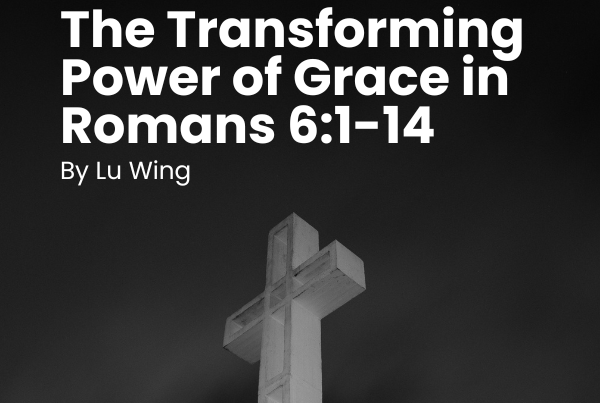
In this final part of this series, we will discuss the nature and significance of Christ’s resurrected body. Specifically, answering the crucial questions that mark the dividing line between heresy and orthodoxy (cf. I John 4:2; 2 John 7), as well as highlighting the great benefits of Christ’s resurrection.
Was Christ’s resurrected body a spiritual (invisible) body or physical (material) body?
Some have suggested that Christ’s glorified body was spiritual (non-material) since Jesus “appeared” and “disappeared” in some post-resurrection sightings. For example, the Jehovah’s Witnesses hold to a spiritual resurrection but deny a physical-material resurrection.To explain the missing body, they assert the body simply dissolved into gases. However, orthodox Christianity had a radically different understanding of Christ’s resurrection.
First, from the beginning Christians held that Jesus rose in the same physical body in which he died. In fact, Jesus offered his body to be observed with the naked eye and invited others to touch Him, even eating a piece of broiled fish in the disciples’ presence (Luke 24:36-43; John 20:24-29).
Second, victory over death is only realized when the same physical body that died is the one that rose from the grave (see 1 Corinthians 15:54-55). Simply receiving another body that is totally different (spiritual) from the one that died is certainly possible, for God can do anything, but it does not solve the problem of death nor does it offer victory, since the body that died is still dead. For Christ to have victory over death, the body must be the same physical body that died.
Third, the physical resurrection is the pattern for the believer’s resurrected body (Philippians 3:21). Paul makes clear that when believers are resurrected, Christ will transform our “lowly body” (GK: soma = body) to be conformed to His glorious “body” (GK; soma = body). In addition, when writing 1 Corinthians (15:35-55) he describes the glorified “body” (GK: soma = body) throughout the chapter as a “physical” body. Robert Gundry’s excellent book, Soma in Biblical Theology (2005), argues that every time the Greek word soma is used of a person it always refers to a physical body.
Fourth, if one believes that Christ was truly “resurrected” then he must also believe that Christ rose from the dead in a physical body. This is made clear by the fact that a resurrection only speaks to the resurrection of the body, since only the body can die. That is to say, without physical death there can be no resurrection (see 1 Corinthians 15:36). It makes no sense to refer to the resurrection of the spirit since the spirit never dies, it lives on after the death of the body (whether one is saved or unsaved). Thus, the spirit cannot experience a true resurrection, as does the body.
Fifth, Paul’s reference to the resurrected body as a “spiritual” body (1 Corinthians 15:44) has been understood by some as referring to the resurrection of the spirit and not to the physical body. By reminder, soma is again the word used here for “body,” so Paul is referring here to a spiritual physical body. No, this is not a contradiction in terms. For example, would we call the apostle Paul a “spiritual” man? Would we say the Bible is a “spiritual” book? Yes, they are spiritual on both accounts, despite the fact that the Bible and Paul are physical. When Paul describes the body as “spiritual,” he is not referring to the substance of the resurrection body (since it is undoubtedly physical as noted by the word soma). Rather, he is referring to the spiritual source of the physical resurrected body. In other words, our glorified body will be a spirit dominated body, driven by the Holy Spirit and not our flesh or fallen human desires.
Finally, the gospel passages that refer to Jesus appearing and disappearing are not referring to his body dematerializing and vanishing into thin air only to appear materialized again somewhere else. The Greek word used to describe these events can be better translated as moving to a place where He could be seen (or not seen), much the same way an actor can make himself visible by coming out from behind the stage curtain. Therefore, the words do not mandate a true disappearance.
Was it the same body that was in the tomb?
Some have suggested that Christ received another body that was not the same as the body that died. This problem is largely due to the passages that imply people did not recognize him after He rose from the dead. To some he appeared as a gardener (John 20:15), to others a stranger (Luke 24:18).
The short answer to the question above is “yes,” it was the same body. This is supported by the fact that Jesus possessed His crucifixion wounds (stigmata) that He put forward as evidence of his resurrection. He even invited witnesses to touch them. Yes, Christ will have his scars in heaven, but we will not. This is due to the fact that Christ’s scars are a trophy to Him and a reminder to us of His love for humanity and that these wounds made salvation possible for all of us. The stigmata is a memorial of His great love and sacrifice for us. On the contrary, we will not have our scars in the afterlife since they are due to a fallen world and sin. We will be restored to perfection.
In addition, as mentioned above, if Christ’s body is not the same that died on the cross then there is no victory over death (see 1 Corinthians 15:54-55), since the body that died is still in the grave. Further, if the body is not the same body that died, where is the deceased body of Jesus? The tomb was empty. The empty tomb is consistent with the glorified body of Jesus as being the same body that died.
What is more, the initial lack of recognition of Jesus what only temporary, which can be explained by either darkness (at the time Mary thought He was the Gardener), fear (disciples were hiding for fear of the Jewish religious leaders), Psychological trauma (disciples didn’t expect to see Jesus after he was killed, they were distraught), and false assumptions (they assumed Jesus was dead).
Finally, John 5:25-30 declares that “all who are in the graves”, which could only be referring to the bodies of deceased, since each spirit continues to live in either torment or bliss (and not in the grave). Each will hear the voice of the Son of God and come forth. This implies that the body that is in the grave will be the same body that is raised. We ought not think that Christ’s resurrection was any different. The body in the tomb was the same body that rose again.
What kinds of change occurred to the glorified body?
Paul’s description of the glorified body in 1 Corinthians 15:35-55 definitely has changes from the earthly body. What is the nature of the change?
First, the glorified body has secondary changes, not primary changes. That is to say, there is no change in who and what we are – namely, a specific person who is human. Secondary changes describe what you have, not who or what you are. For example, the body dies weak, but is raised strong; dies corruptible, but raised incorruptible; dies a natural body, but raised a spiritually dominated body; dies perishable, but raised imperishable; and dies mortal but raised immortal. If we adopt the view that primary changes (i.e., changes in who and what we are) characterize the glorified body, we are then closer to eastern reincarnation than Christian resurrection. For example, depending on what form of reincarnation one holds, an individual can return in another body that could be an animal, insect, or some other kind of being. However, Christian resurrection retains our individual identity and human nature.
Paul uses the seed analogy when he describes the glory of the resurrected body (1 Corinthians 15:36-49). In very descriptive language, Paul informs his readers that what comes from the seed (wheat or some other grain) is much more glorious than the seed itself (earthly body that dies). The glorious wheat or grain also retains the same genetic identity as the seed. Thus the resurrected body is more glorious than the earthly body as a flower or grain is more glorious than the seed from which it came. Though more glorious than the body that died, the resurrected body has same genetic identity as the seed (earthly body) sown into the ground. Thus the glorious resurrected body is the same genetic individual that died.
Does Christ still have his resurrected physical body today?
Some have suggested Christ does not have his physical body in heaven, but this view is outside the biblical descriptions that affirm His continued state in the physical body.
First, 1 John 4:2-3 offers a test for sound doctrine and how to identify false “believers.” John gives his readers a test by which to discover false prophets when he says, “By this you know the Spirit of God: every spirit that confesses Jesus Christ has come in the flesh is of God, and every spirit that does not confess that Jesus Christ has come in the flesh is not of God. And this is the spirit of anti-Christ.” Though not evident in the English, the Greek word for “has come” (in the flesh) is in the perfect tense, which refers to past completed action with abiding results in the present. Therefore, the test for orthodoxy is whether an individual believes that Christ came in the flesh (GK: sarx = flesh, rudimentary word referring to the material body) in the past and continues in the flesh (body) in the present. Since I John was written after the Christ’s resurrection and ascension into heaven, it must be referring to His first coming and his present continuation in the body in heaven.
Second, 2 John 7 reaffirms Christ’s present continuation in His body while in heaven. John identifies “deceivers” as those who “do not confess Jesus Christ as coming in the flesh.” Here John uses the present participle for the word “coming,” meaning the verse can be translated as those who “do not confess Jesus Christ as presently continuing in the flesh.”
Finally, the fact that Jesus will return to earth at His second coming in his physical body to the Mount of Olives is consistent with Jesus retaining his body in heaven today. The angels spoke at His ascension and said Jesus would return in like manner he ascended to heaven – namely, visibly and bodily! There is no logical reason to reject Christ’s bodily continuation today if he rose from the grave in the body, ascended to heaven in His body, conforms us to the likeness of His body, and returns to the earth in His body. To deny the continued physicality of Christ is a form of post-resurrectional Docetism (ancient heresy that denies the material humanity of Christ).
Conclusion
The resurrection has always been the capstone in the arch of Christianity. It’s a stone that is well-placed and firmly rooted in its fixed foundational position. It is because Jesus rose from the grave we can rest assured we will rise in due time and have all the physical and spiritual benefits our Lord possesses. We have a bright future, for He too was a man – who loved all mankind and desires all to be saved (1 Peter 3:9).
Also, enjoy the first two parts of this three-part series:
“Evidence for the Resurrection: Is Easter Just More of the Same?”









